Eggert Bülk. Passion and genius | First Part
The portrait of an HPV pioneer, written by Jens Buckbesch.
Eggert Bülk. Passion and genius | First Part
The portrait of an HPV pioneer, written by Jens Buckbesch.
Eggert Bülk was born in Hamburg in 1940. At the age of 8 he emigrated to Colombia with his parents.
These were economically difficult times and Eggert had to work hard on his parent’s farm even as a teenager, in addition to school and training. Nevertheless, Eggert was already interested in aerodynamics at the age of 12 and designed gliders for model competitions.
At the age of 14, Eggert focused on improving the aerodynamics of human-powered vehicles. He built soapboxes and partially faired scooters, with which he began to track down the laws of aerodynamics. This passionate drive should accompany him throughout his life.
From then on he took part in all interesting bicycle races in which technical innovations were allowed and continued to optimize.
Eggert 1959.
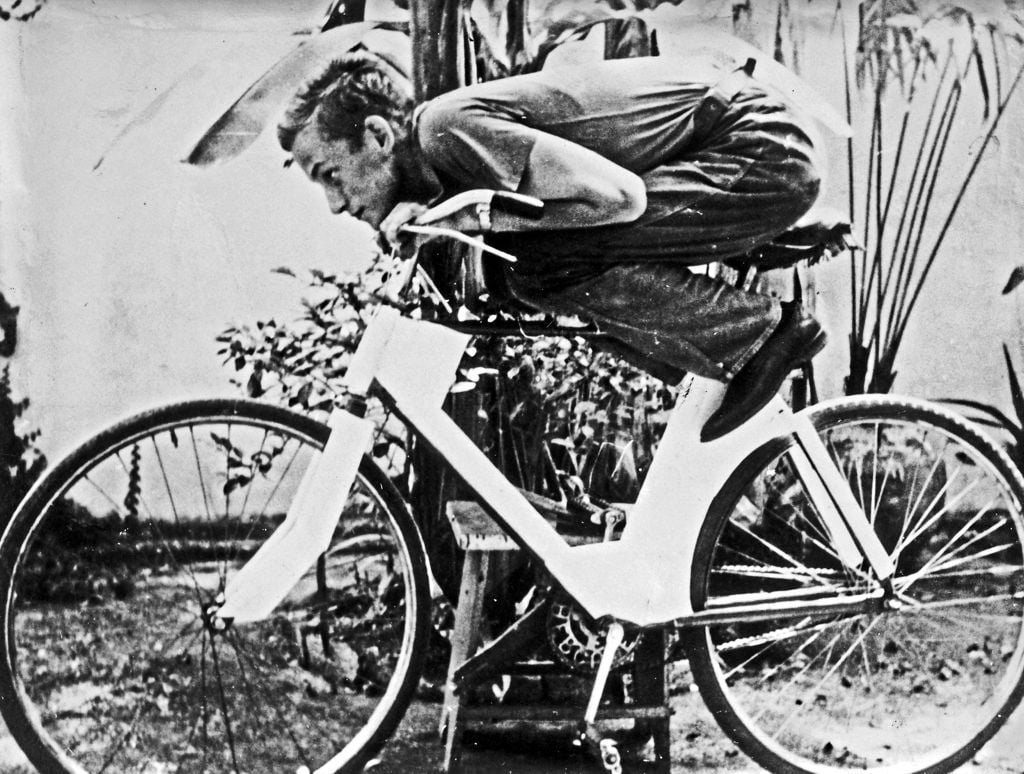
He moved to Germany in 1961, studied mechanical engineering and also became familiar with the scientific principles of aerodynamics.
For his family and the support of his parents, Eggert worked as a mechanical engineer for 55 years and only retired at the age of 80.
When Eggert entered his private workshop at home after work, he could devote himself entirely to his passion for HPV vehicles. Then he turned night into day and created a whole series of designs that would later have a significant influence on the development of commercial recumbents and velomobiles.
Flat lay as a sketch and ready to drive.
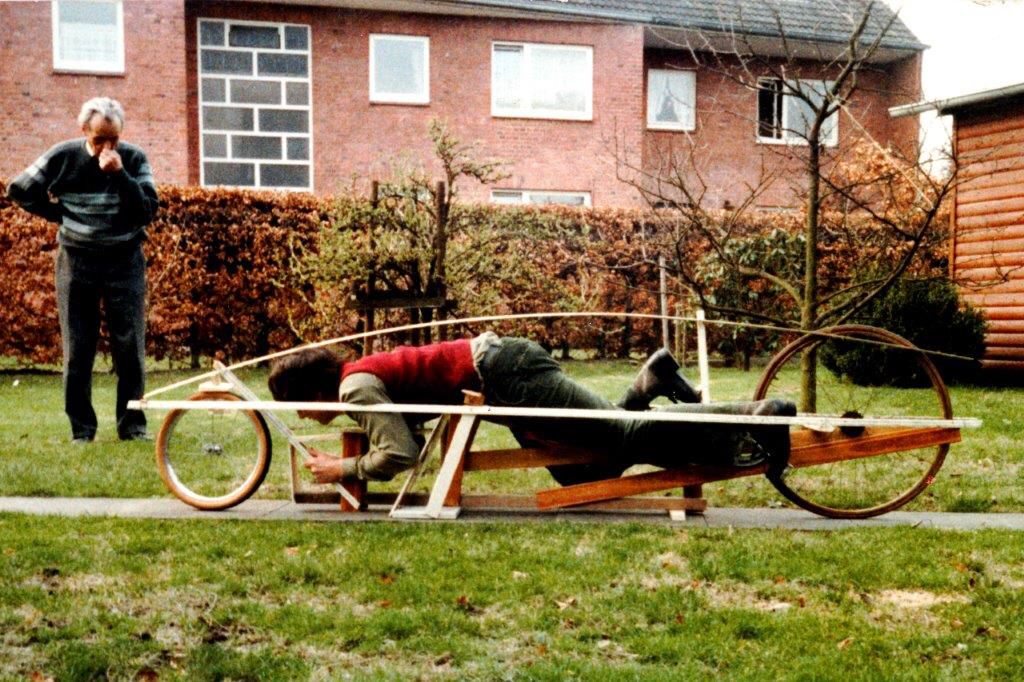
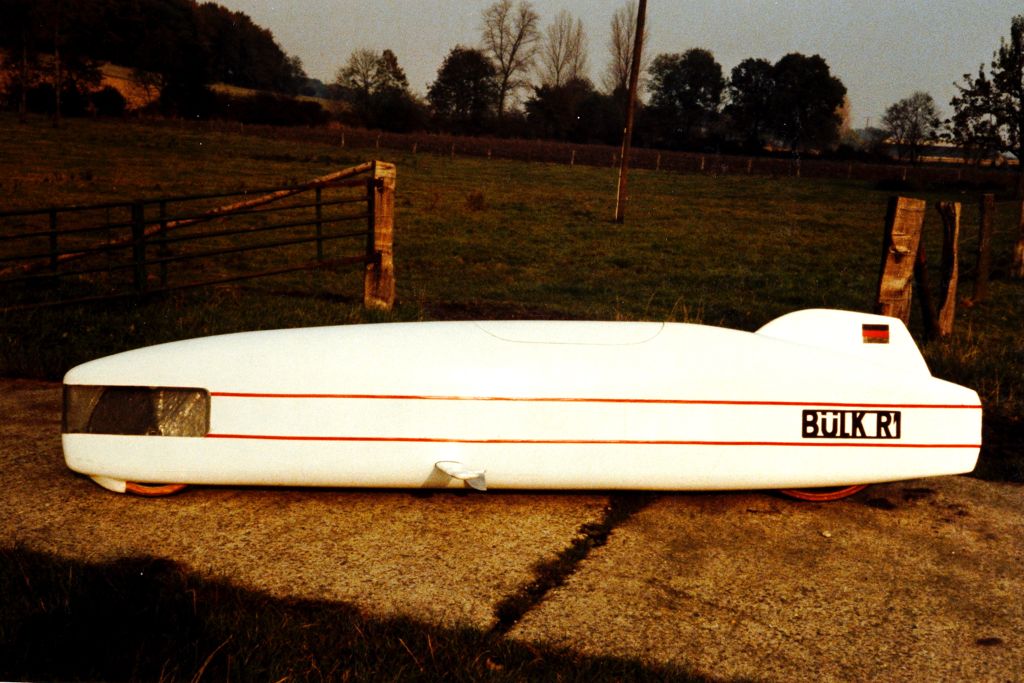
Also works upright.
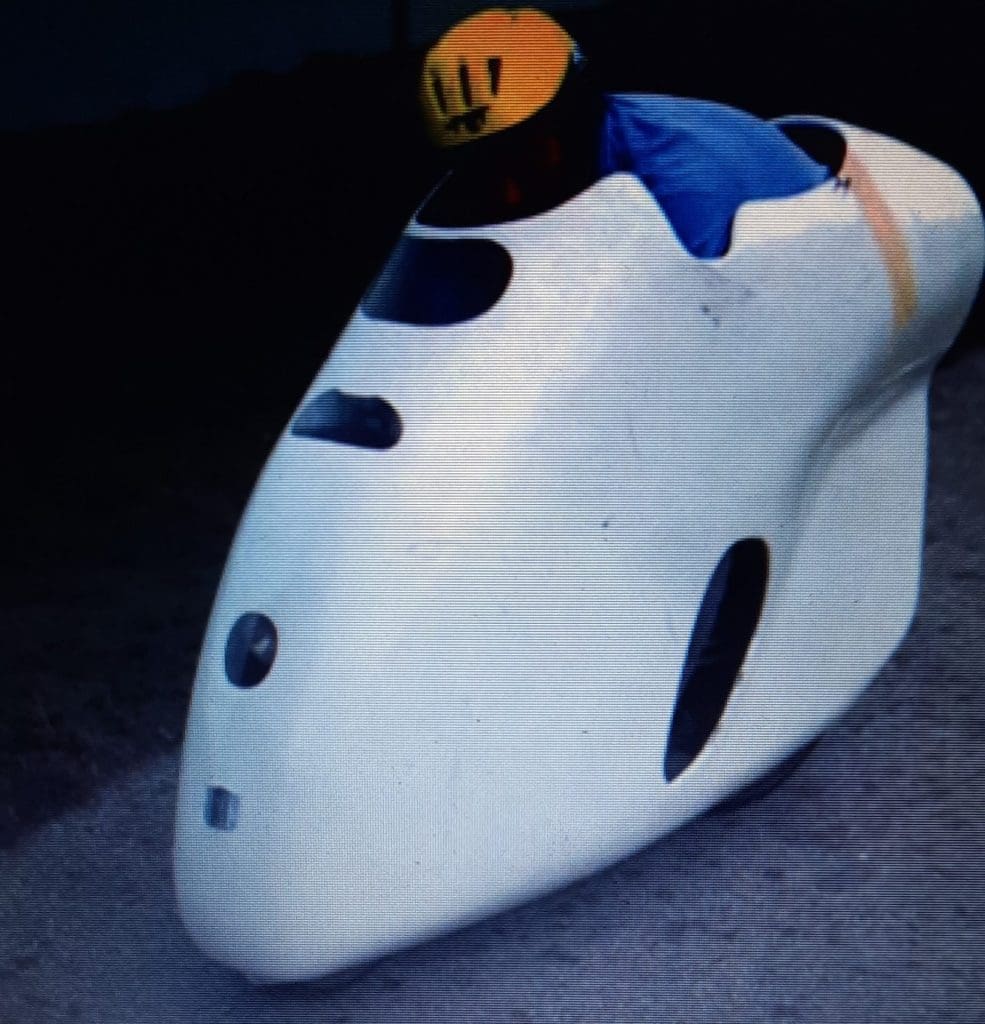
All of these designs and constructions had one thing in common: They were extreme and always tried to achieve maximum efficiency and speed. These unique pieces were not always suitable for everyday use, as they were always intended for competition. But precisely by crossing many conventional boundaries, Eggert Bülk has shattered the paradigms of bicycle construction and thus created the basis for innovations.
Here the camping bike. Fully travel-ready.
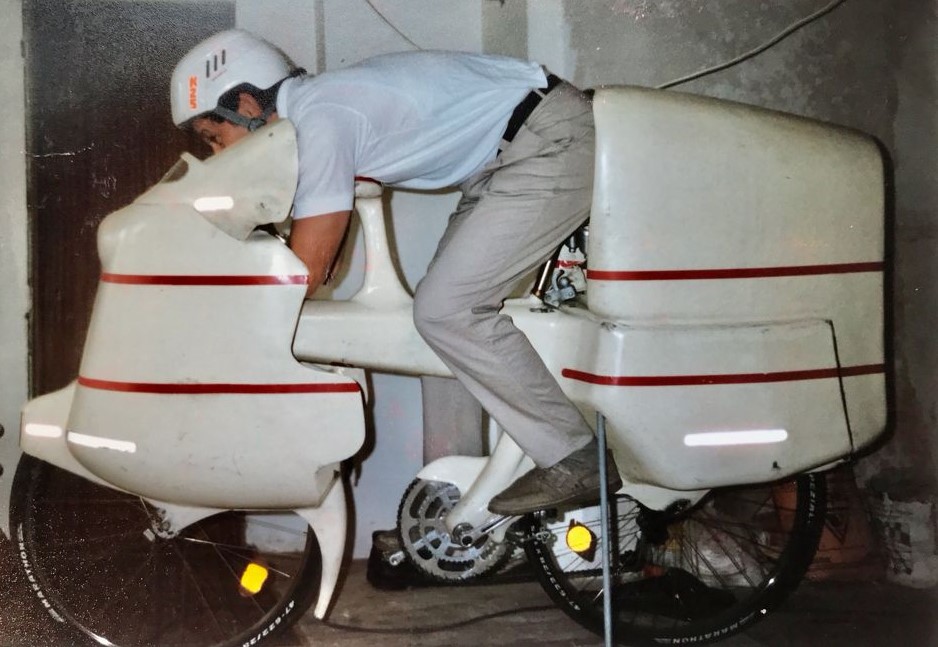
Here the dragon wheel with son. Fully travel-ready.
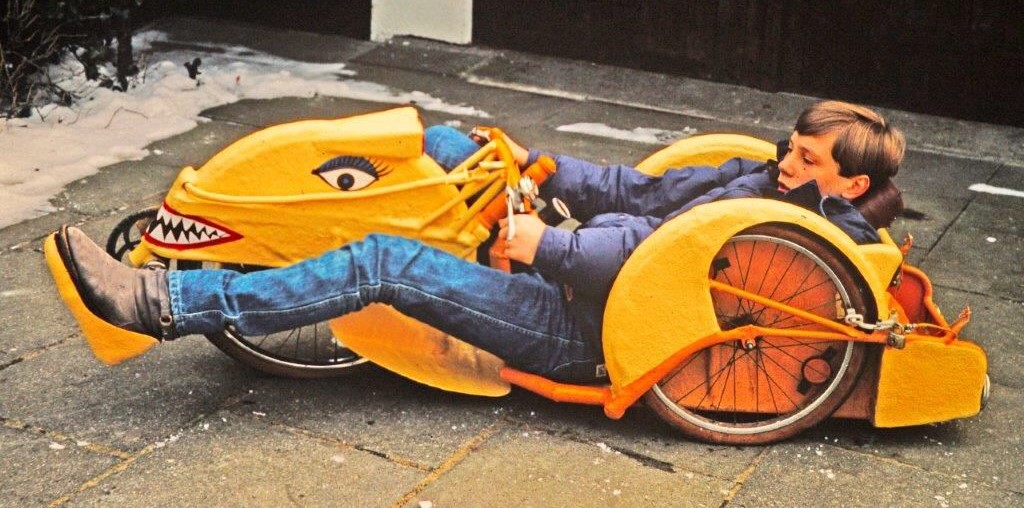
Or this extreme tricycle, suitable for traffic, but very flat.
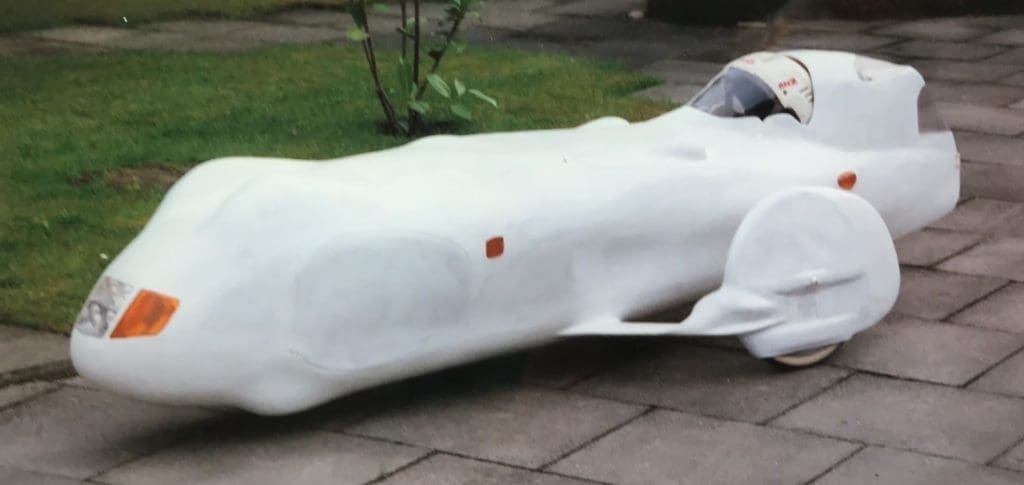
With his extreme designs, Eggert was able to win many prizes at races and that apparently also gave him the strength for ever new innovations and approaches.
In the 1990s, Eggert created a single-track velomobile based on a front-wheel drive ultra-low-flyer, the Bülk 1 and later the Bülk 2. With this vehicle, he was able to achieve excellent results both in races and on public roads. He used it as a commuter vehicle for his trips to work.
The Bülk 2 with Eggert at the fleche allemagne.
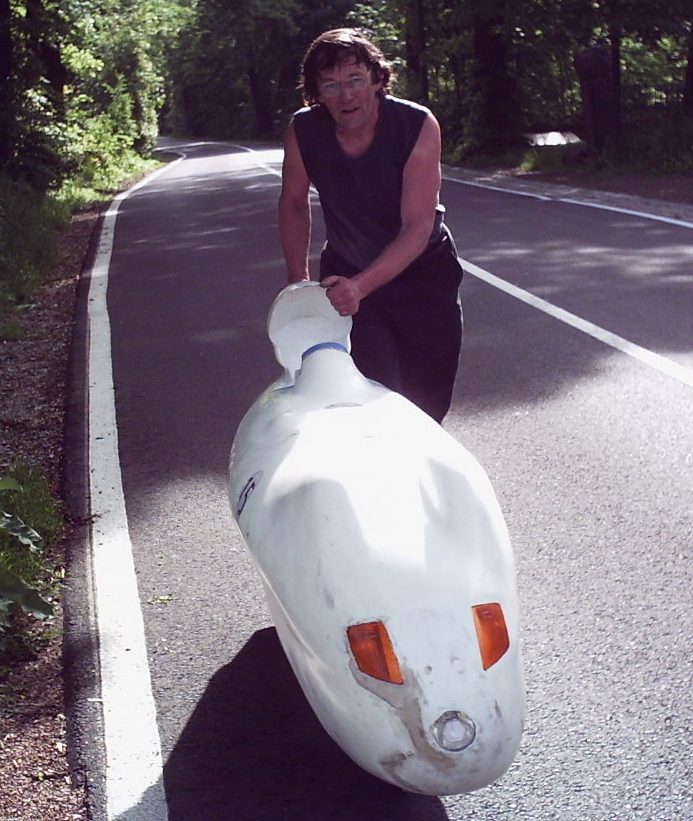
Bülk 2 during the Eustaff preparation.
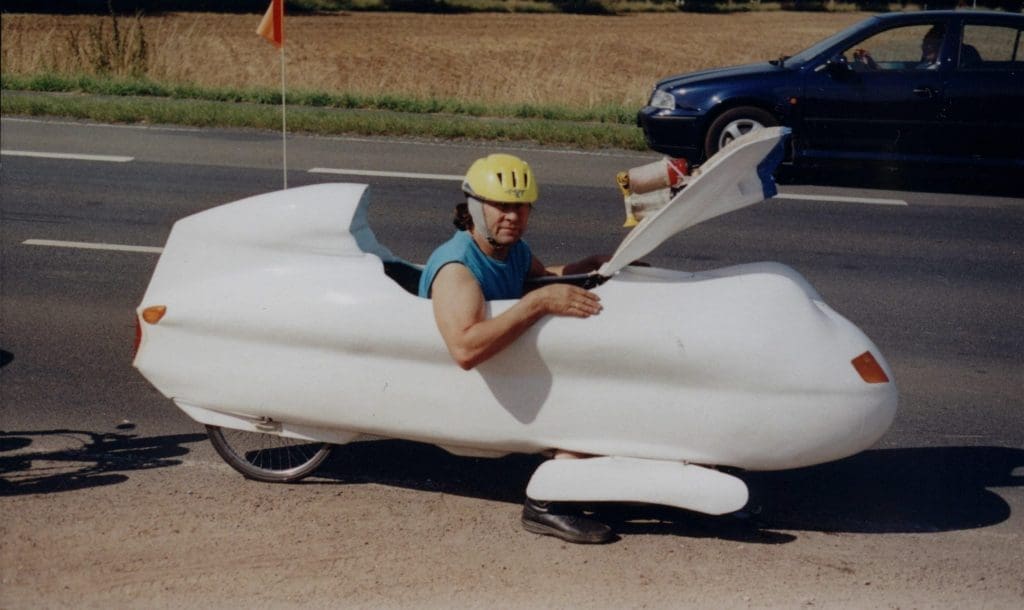
Jens Buckbesch: During this time I got to know Eggert through the HPV and racing scene. He was and is to me like a friend and teacher at the same time.
Eggert rode the Bülk 2 like hell at the races, I didn’t stand a chance against him despite the big age difference. Luckily I was allowed to make a copy of his Bülk 2. I took a negative mold and made different copies out of it. Christian von Ascheberg set the 24-hour world record on one in 2009.
5 Hellhounds in Bülk 2.
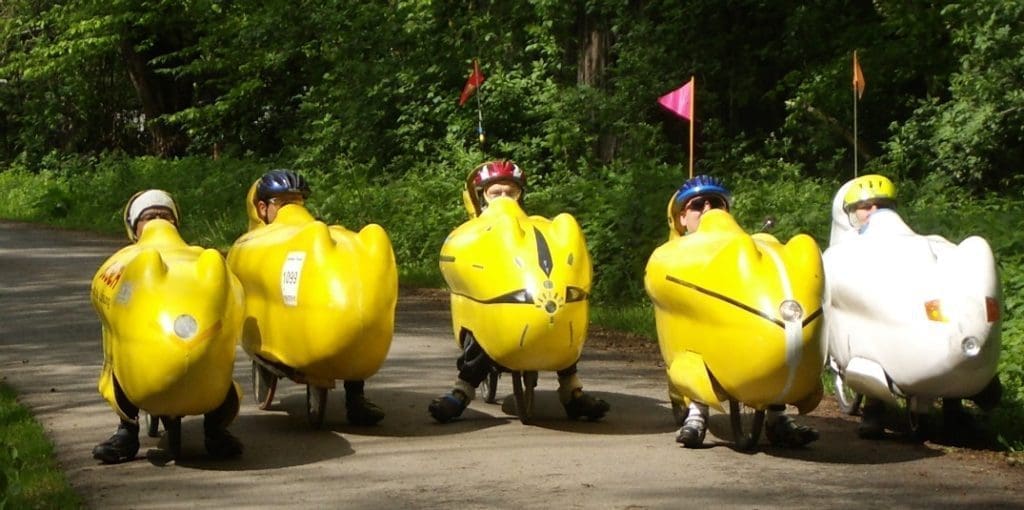
In the next part I will continue this portrait. Then it’s about the development of the Milan and its variants.
I hope you enjoyed it.
Jens Buckbesch
This will close in 0 seconds
This will close in 0 seconds
This will close in 0 seconds
This will close in 0 seconds
This will close in 0 seconds
This will close in 0 seconds
This will close in 0 seconds
This will close in 0 seconds
This will close in 0 seconds
This will close in 0 seconds
This will close in 0 seconds
This will close in 0 seconds
This will close in 0 seconds
This will close in 0 seconds
This will close in 0 seconds
This will close in 0 seconds
This will close in 0 seconds
This will close in 0 seconds
This will close in 0 seconds
This will close in 0 seconds
This will close in 0 seconds
This will close in 0 seconds
This will close in 0 seconds
This will close in 0 seconds
This will close in 0 seconds
This will close in 0 seconds